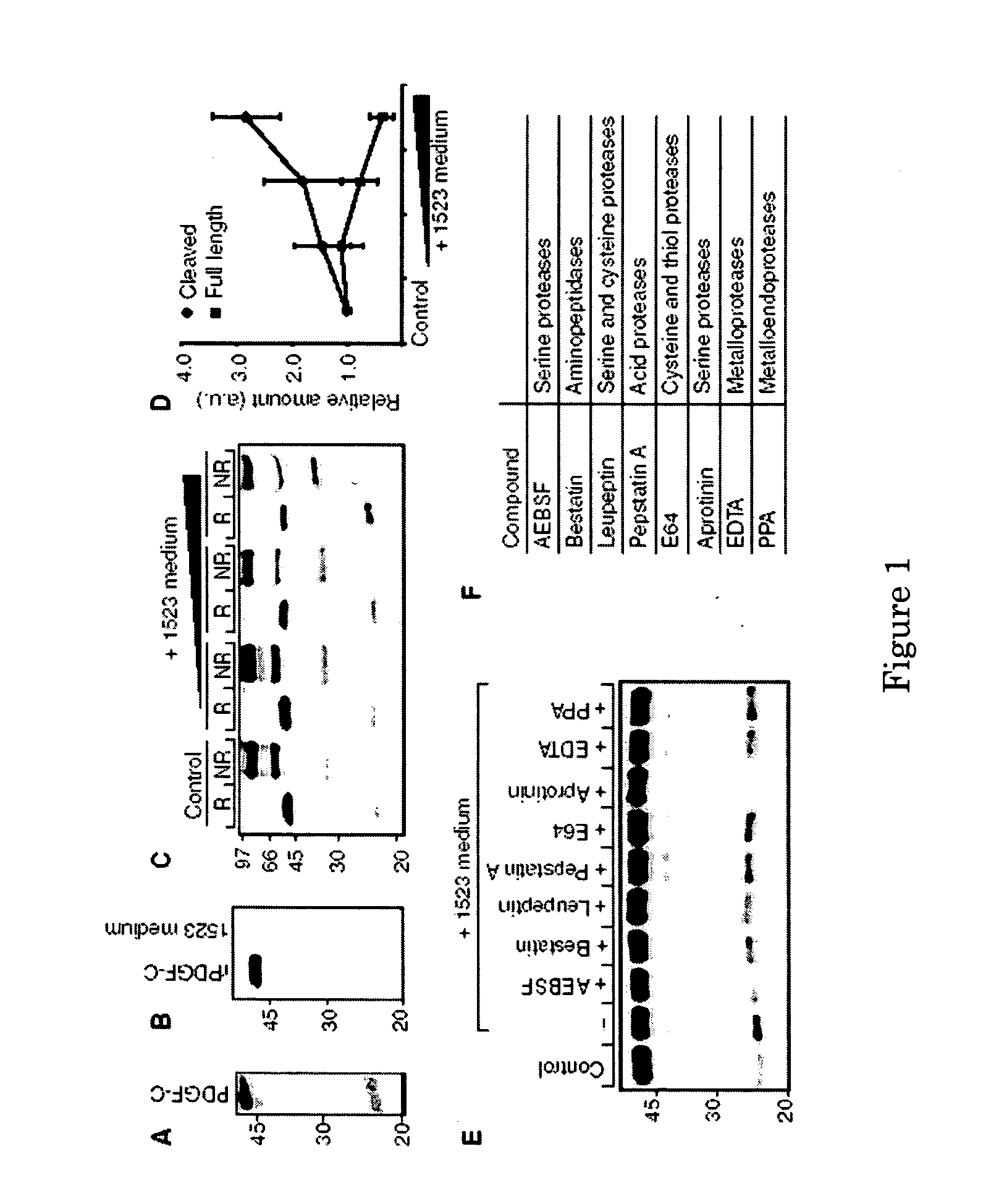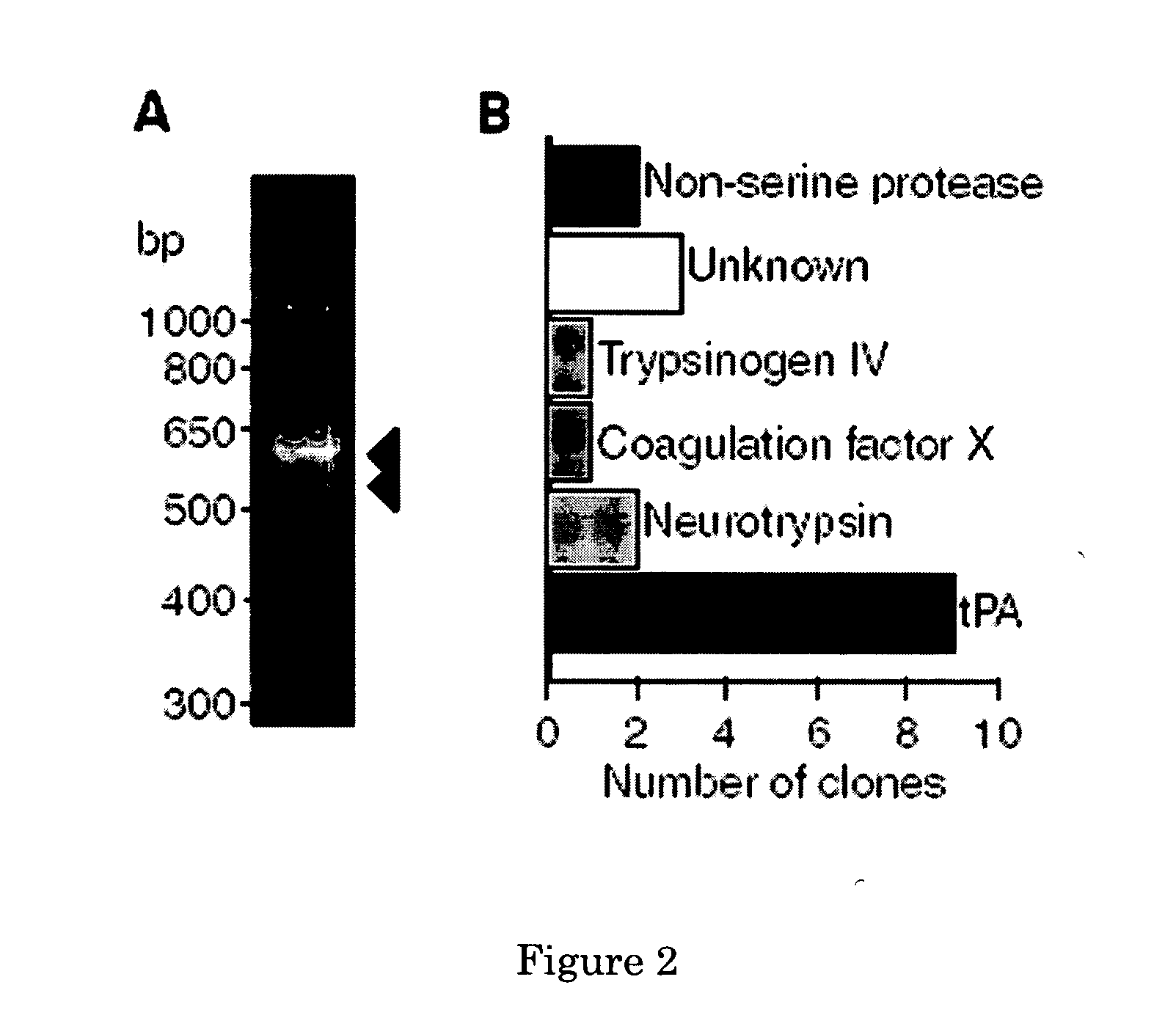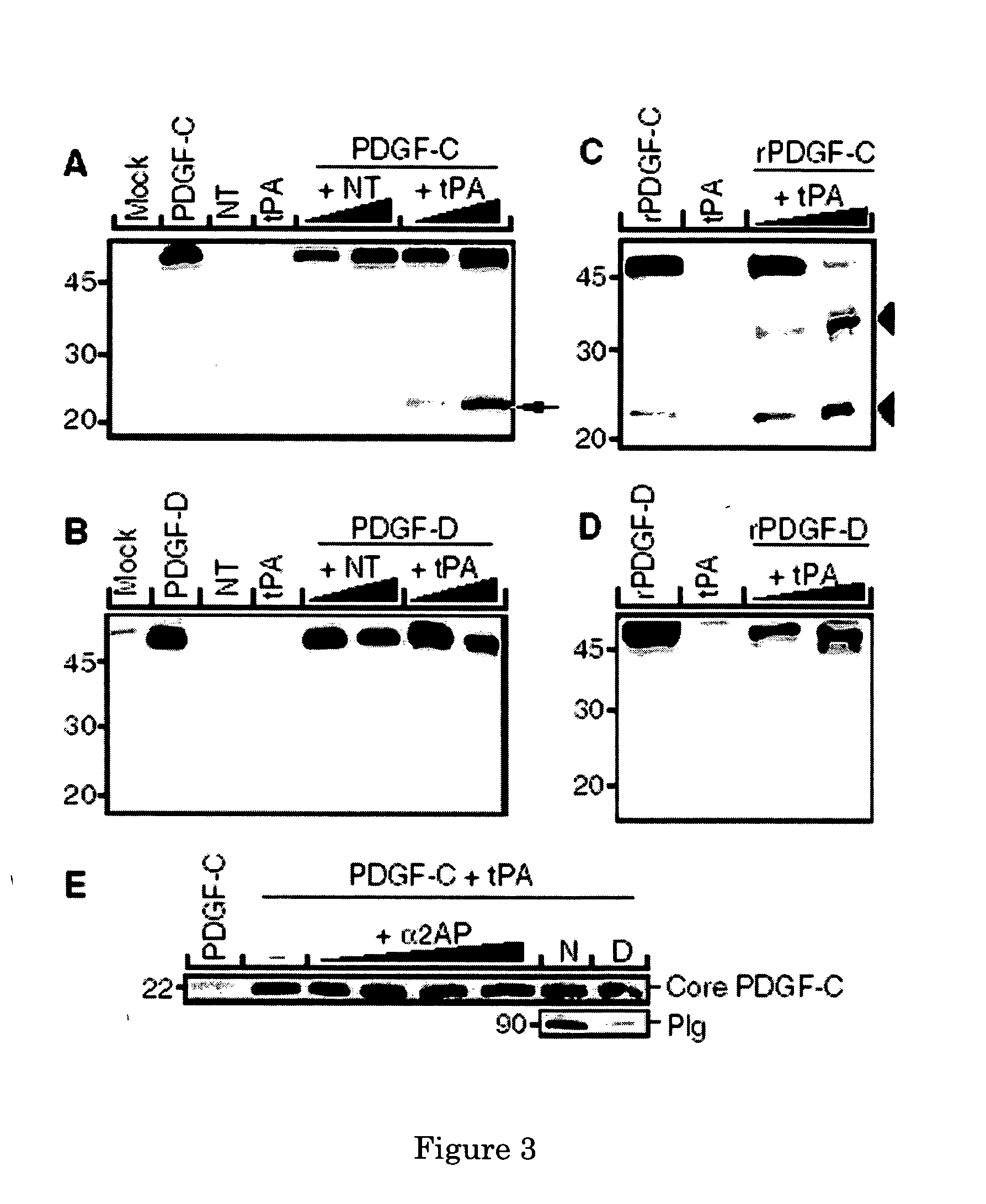Methods and compositions for PDGF-C activation and inhibition
a technology of platelet-derived growth factor and composition, which is applied in the direction of antibody medical ingredients, peptide sources, extracellular fluid disorders, etc., can solve the problems of complex pdgf receptor-mediated signaling and unfulfilled understanding of the cub domain role, and achieve the effect of inhibiting downstream signalling
- Summary
- Abstract
- Description
- Claims
- Application Information
AI Technical Summary
Benefits of technology
Problems solved by technology
Method used
Image
Examples
example 1
Identification and Cloning of a PDGF-CC Processing Protease
[0063] In order to identify enzymes capable of activating latent PDGF-CC, conditioned media from different in vitro-grown cell lines were screened for expression of endogenous PDGF-CC, and for the capacity to cleave and activate the secreted latent growth factor. The human fibroblastic cell line AG1523 efficiently secreted full-length PDGF-CC, and also displayed the capacity to cleave specifically full-length PDGF-C chains, thus releasing a distinct 22 kDa species under reducing conditions (FIG. 1A). This species migrated similarly to the recombinant active growth factor domain of PDGF-C expressed in insect cells (Li et al, 2000).
[0064] In an in vitro assay, the properties of the enzyme(s) involved in cleavage and activation of PDGF-CC were studied by mixing serum-free conditioned media from AG1523 cells with His6-tagged recombinant full-length PDGF-CC. Control analysis demonstrated that immunoreactivity toward the His6 ep...
example 2
tPA is a Specific Activator of Latent PDGF-CC
[0067] A cotransfection assay was established to identify serine proteases able to cleave and activate latent PDGF-CC. Expression plasmids encoding the relevant enzymes and full-length PDGF-C were cotransfected into COS-1 cells, and aliquots of the conditioned media from the transfectants were subjected to SDS-PAGE and immunoblotting using antibodies to the growth factor domain of PDGF-C. The results showed that tPA released the growth factor domain of latent PDGFCC, and the fragment migrated as a 22 kDa species under reducing conditions (FIG. 3A). In contrast, neurotrypsin (NT) lacked proteolytic activity toward latent PDGF-CC. As a specificity control, the ability of tPA and NT to use full-length PDGF-DD as the substrate in the cotransfection assay was analysed. The results revealed that neither of the two enzymes was able to cleave and activate latent PDGF-DD (FIG. 3B). Using purified tPA and recombinant latent PDGF-CC, or recombinant...
example 3
tPA-Mediated Activation of PDGF-CC Generates a PDGFR-α Agonist
[0071] It was verified that the growth factor domain in PDGF-CC released by tPA-mediated proteolysis is an efficient PDGFR-A ligand. Conditioned media from transfected COS-1 cells were applied onto porcine aortic endothelial (PAE) cells with stable expression of PDGFR-α (FIG. 5A). Stimulation of the cells using conditioned medium from mock-transfected COS-1 cells, or media from transfected COS-1 cells separately expressing tPA, or latent PDGF-CC, failed to induce receptor activation measured as induction of receptor tyrosine phosphorylation. In contrast, stimulation using medium from COS-1 cells coexpressing tPA and full-length PDGF-CC induced strong PDGFR-α activation. This showed that the growth factor domain of full-length PDGF-CC released by tPA is a bona fide ligand and activator of PDGFR-α.
[0072] The possibility of a direct protein-protein interaction between tPA and latent PDGF-CC was explored by developing a pul...
PUM
 Login to View More
Login to View More Abstract
Description
Claims
Application Information
 Login to View More
Login to View More - R&D
- Intellectual Property
- Life Sciences
- Materials
- Tech Scout
- Unparalleled Data Quality
- Higher Quality Content
- 60% Fewer Hallucinations
Browse by: Latest US Patents, China's latest patents, Technical Efficacy Thesaurus, Application Domain, Technology Topic, Popular Technical Reports.
© 2025 PatSnap. All rights reserved.Legal|Privacy policy|Modern Slavery Act Transparency Statement|Sitemap|About US| Contact US: help@patsnap.com



